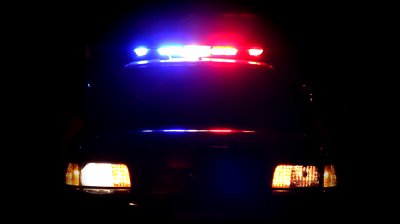Safety First?
By Alison Palmeri, Staff Writer
What do you do when you’re driving down a backroad at night and suddenly see police-style lights flashing behind you? If your instincts are like most people, then driving to a well-lit area before stopping seems like the safest bet. Do this, however, and you could risk be arrested and charged with evading an officer or resisting arrest.
Within the past year, two highly publicized stories involving two very different people involved this situation. In February 2015, 24-year-old student, DaJuawn Wallace, was driving early one morning when an officer tried to pull him over because his vehicle matched a description.[i] Wallace slowed his speed, waved to the officer, and drove for about a mile and a half before stopping at a Sam’s Club.[ii] Wallace was charged with fleeing and eluding police. In Wallace’s mind, however, “[he] live[s] in Detroit, and [he] knows some people who were robbed by fake police officers. . . [He] was taught to find a well-lit area to pull over in.”[iii]
Similarly, in April 2015, DelRea Good, a 52-year-old nurse was driving on an unlit backroad when an officer clocked her for speeding.[iv] Good did not stop right away, but she slowed down, activated her hazard lights, and drove less than a mile before stopping in a Kohl’s parking lot.[v] The officer was enraged that Good had not stopped right away and took her into custody for resisting arrest. Good’s reaction was similar to Wallace’s in that she “was scared for [her] safety. . . It was a very dark road and [she] wanted to get to a safe, well-lit place.”[vi]
So where does Pennsylvania stand on this issue?
In Pennsylvania, it is considered a second-degree misdemeanor for a driver to willfully fail or refuse to bring their car to a stop when signaled to by a police officer.[vii] If convicted, a person can expect to pay a fine of $500 in addition to other fines, fees, or having to serve jail time.[viii]
However, there are some possible defenses. The defendant will not be held liable if they can show, the “officer’s vehicle was not clearly identifiable by its markings or, if unmarked, was not occupied by a police officer who was in uniform and displaying a badge or other sign of authority”[ix] or, by a preponderance of the evidence, “the failure to stop immediately for a police officer’s vehicle was based upon a good faith concern for personal safety.”[x]
Factors that the court can take into consideration to show good faith include: “(i) the time and location of the event; (ii) the type of police vehicle used by the police officer; (iii) the defendant’s conduct while being followed by the police officer; (iv) whether the defendant stopped at the first available reasonably lighted or populated area; and (v) any other factor considered relevant by the court.”[xi]
The PA Driver’s Manual notes that police lights can be red and blue or only red, and if a car is “flashing only blue lights, then it is not a police officer.”[xii]
Additionally, even if the car lights are the appropriate color, if it is still uncertain that the driver is a police officer, it is permissible to drive to the “nearest well-lit, populated area, but acknowledge you understand the request to stop by turning on your flashers and driving at a reduced speed.”[xiii]
At all times, it is appropriate to ask the officer for identification, and the Driver’s Manual goes as far as to say that the driver should do this if the officer is not in uniform or in an unmarked car.[xiv]
Ultimately, the charges have been dropped against both Good and Wallace, but the incidents still remain on their records. What happened to them is likely not uncommon, especially when there have been stories of ill-fated encounters with police impersonators and most people want to feel as safe as possible in this vulnerable situation. While it is possible in any similar incident that the officer would still believe his authority had been ignored and feel the need to make an arrest, at least under PA law, some defenses are available.
[i] Wing, Nick, “Black College Student Charged With ‘Fleeing’ Police After Driving to Well-Lit Area to Pull Over,” The Huffington Post, accessed Feb. 1, 2016 <http://www.huffingtonpost.com/2015/07/06/dajuawn-wallace-police_n_7737854.html>.
[ii] Id.
[iii] Id.
[iv] Davich, Jerry, “Must You Always Stop Immediately for a Cop?” Post-Tribune, accessed Jan. 31, 2016 <http://www.chicagotribune.com/suburbs/post-tribune/opinion/ct-ptb-davich-delrea-good-arrest-st-0410-20150409-column.html>.
[v] Id.
[vi] Id.
[vii] 75 Pa. Stat. and Consol. Stat. Ann. § 3733(a)-(a.2)(1) (West).
[viii] Id. at (a.2)(1).
[ix] Id. at (c)(1).
[x] Id.. at (c)(2).
[xi] Id. at (c)(2)(i)-(v).
[xii] PA Driver’s Manual. Chapter 4, pg. 79.
[xiii] Id.
[xiv] Id.
